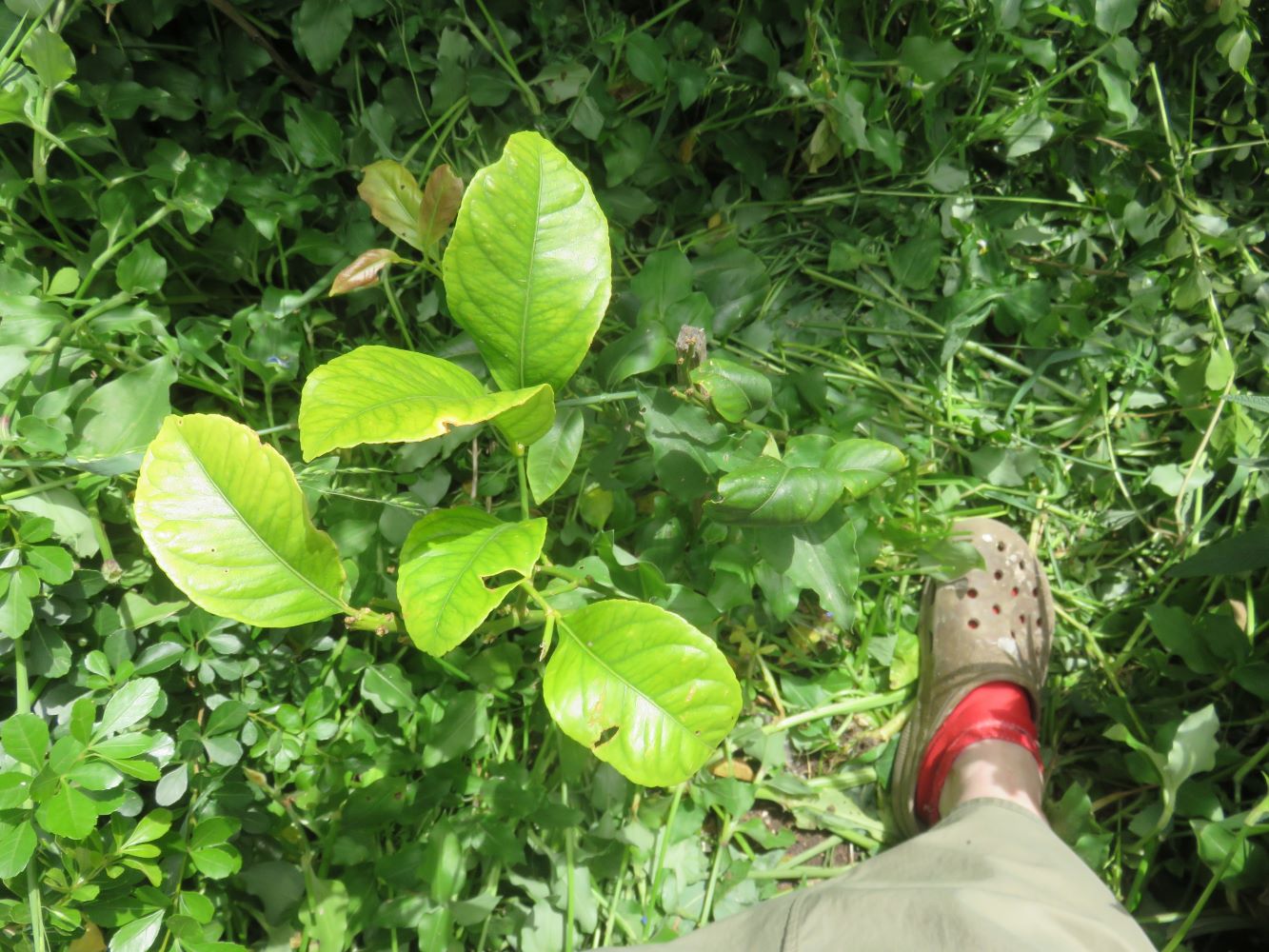Dear Reader, in this age of AI created content, please support with your goodwill someone who works harder to provide the human-made. Sign up at the top of the lefthand column or bottom of this page. You will receive my hand illustrated monthly newsletter RESTORE NATURE and access to the biodiversity garden design course as I write...and nothing else, I respect your time. I am also removing the advertizing as best I can as its become intrusive inappropriate and pays me nothing.
Regenerative gardening activity
2
Trampling weeds
 Trampling weeds like invasive Commelina round lemon tree.
Trampling weeds like invasive Commelina round lemon tree.Oct 9, 2020.
2. Trampling weeds
This rather simple regenerative garden technique has many benefits.
I first learned about trampling weeds in the video I'll link you to here, at 10.40 minutes. It is about a couple with a nearly thirty year old food forest and a village environment centre in New Zealand. They have done a fabulous job and the whole video is full of learning moments, and beautiful and inspiring. I've watched it about eight times. The film maker has made a series of interesting videos for 'Happen Films' in this vein.
Anyway, I pushed trampling to the back of my mind, thinking, yes, one day when I have a hectare. However, since becoming converted to regeneration-ism (it is like a religion, I tell you) I've been using it more often.
Just now I wanted to clear a bit around the lemon tree in a neglected part of the garden with lots of small trees that is intended as a food forest. I started clipping and then ran out of patience and just trampled the grass and Commelina cyanea to the ground. Commelina is often confused with wandering jew which it is not ! Its actually scurvy weed. Its stems break easily underfoot. Mature grass invites trampling. It sort of lies down horizontally as it ages, and the bottom of it forms a dense brown mat that starts to decompose while the plant is still alive, Yum for nunus (small and microscopic animals) !
The benefits of trampling weeds
Trampling
is a very quick way of giving a plant that is overwhelmed by an invader
some space to breathe and get sun. Then you can come back later with
more rigorous methods if the trampling is not effective enough. This way
roots stay in the ground and the soil microbiome is not disturbed, so that they soil life remains diverse and healthy. In addition, if the plants remain alive, the remaining roots may still give off sugars into the ground, sustaining soil life. If the plants die, then their decaying roots will also feed the soil with organic matter. We can also maintain plant diversity in the garden by trampling weeds this way, without such negative impacts from invasive plants. The trampling sets them back, keeps them in check, but doesn't kill them. This replaces the beneficial effects of cows trampling vegetation used in regenerative agriculture, with something more appropriate in an urban garden.
------
home page for links to numerous natural gardening topics
------
The greenidiom regenerative gardening blog
Restore Nature Newsletter
I've been writing for four years now and I would love to hear from you
Please let me know if you have any questions, comments or stories to share on gardening, permaculture, regenerative agriculture, food forests, natural gardening, do nothing gardening, observations about pests and diseases, foraging, dealing with and using weeds constructively, composting and going offgrid.
SEARCH
Order the Kindle E-book for the SPECIAL PRICE of only
Prices valid till 30.09.2023
Recent Articles
-
garden for life is a blog about saving the earth one garden at a time
Apr 18, 25 01:18 PM
The garden for life blog has short articles on gardening for biodiversity with native plants and regenerating soil for climate amelioration and nutritious food -
Cape Flats Sand Fynbos, Cape Town's most endangered native vegetation!
Apr 18, 25 10:36 AM
Cape Flats Sand Fynbos, a vegetation type found in the super diverse Cape Fynbos region is threatened by Cape Town's urban development and invasive alien plants -
Geography Research Task
Jan 31, 25 11:37 PM
To whom it may concern My name is Tanyaradzwa Madziwa and I am a matric student at Springfield Convent School. As part of our geography syllabus for this
"How to start a profitable worm business on a shoestring budget
Order a printed copy from "Amazon" at the SPECIAL PRICE of only
or a digital version from the "Kindle" store at the SPECIAL PRICE of only
Prices valid till 30.09.2023







